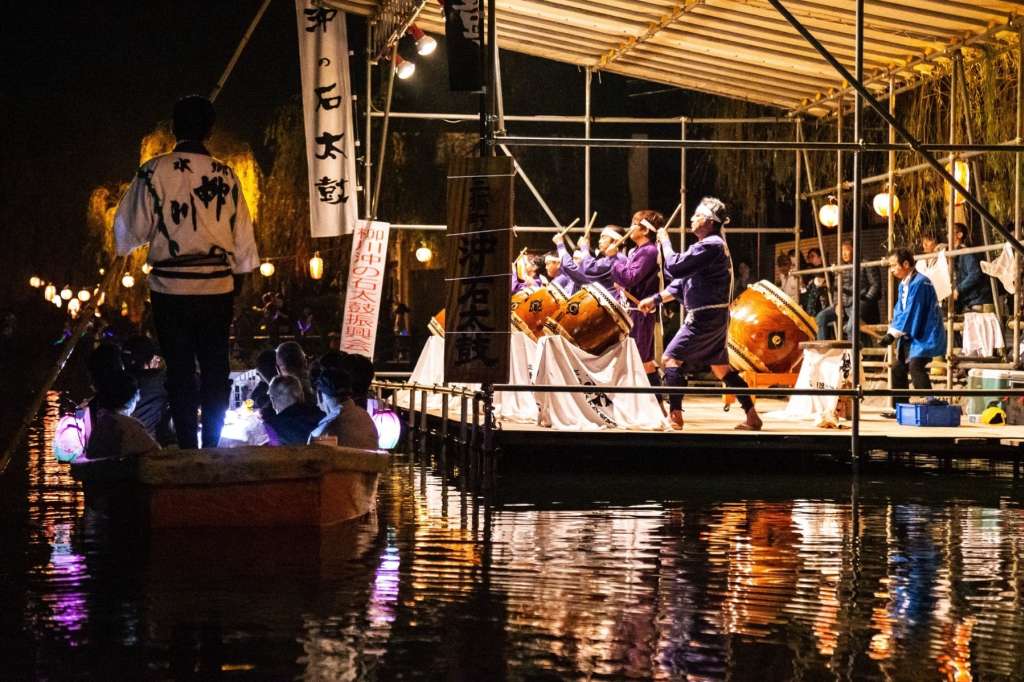
An Insider's Guide to Yanagawa Take a journey through the 'Venice of Kyushu'
Dubbed the ‘city of water’ and ‘the Venice of Kyushu’, Fukuoka Prefecture’s city of Yanagawa is renowned for its hundreds of kilometres of canals (470 kilometres, to be precise). What better way to gain an insight into the city’s rich history, vibrant matsuri (festivals) and traditional fare, than hearing from a local sendo-san (boatman)?
Tsutsumi Hiroaki was born and bred in Yanagawa and has been steering for over three decades. Tsutsumi is now known in the region as one of the most experienced boatmen and tour guides at Yanagawa Kanko Kaihatsu K.K. , a local donkobune operator, and he loves every day on the job.

What do you like most about your job?
The opportunity to meet people and hear stories from all walks of life - I really treasure these encounters. It’s always nice to see happy, smiling faces at the end of the trip and know that the passengers have had a good time. Working outside in the fresh air in such a beautiful environment is also certainly hard to beat.
We understand that the sendo-san sing as they steer the boats down the canals. Can you tell us about this tradition and what the songs are about?
These are old Yanagawa songs from the Showa Period (1926-1989) about local traditions, our boating culture or about a particular season. I aim to select a song which will hopefully move my passengers and remain in their memory. My go-to is the nursery rhyme, ‘Amefuri’, written by the famous poet, Kitahara Hakushu, who was born here in 1886.
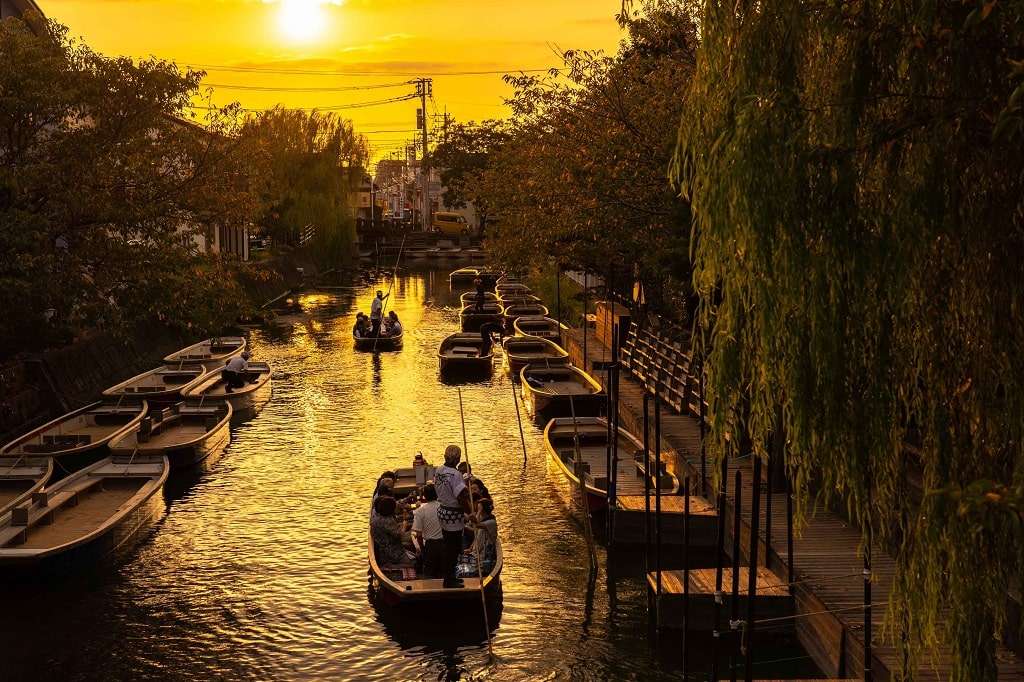
Apart from having a good singing voice and a great sense of balance(!), what other key skills or qualities do you need for this job?
Sendo-san need to be good at all aspects of boat management, from navigating to steering the boat skilfully. They also need to be good communicators and effectively explain our local history and culture. It’s important to be a good conversationalist and to read the mood of the passengers - creating the right atmosphere with a comfortable space and adequate time to allow our guests to simply enjoy the peace and serenity is essential.
Have you ever fallen into the canal while you’ve been steering a donkobune?! What about your passengers?!
Your question takes me back 30 years when I first began my career - yes! Luckily, the canals are quite shallow so there was no real danger. Of course, this rarely happens, but as professional sendo-san we treat this very seriously. Good boat safety is critical.
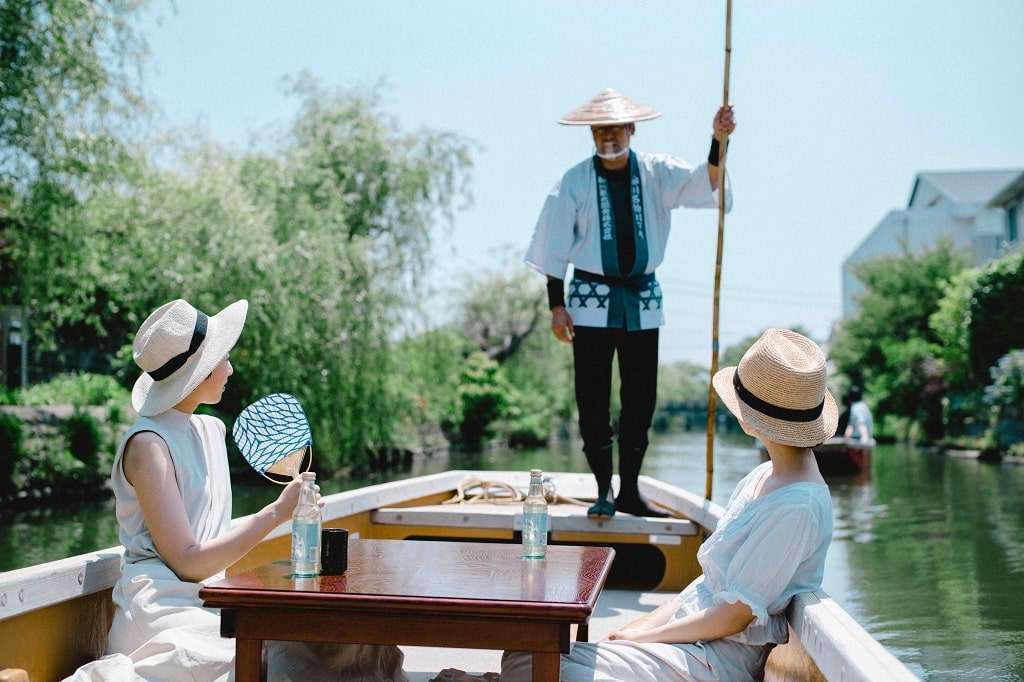
Do you need a special licence to be a sendo-san?
There’s no national system. However, within the company there is a formal qualification process. You are initially employed on a three-month trial basis, where you receive comprehensive training on boat handling skills, local history, passenger safety and communication. If you pass this initial phase, you become an apprentice. To progress in this career, you need to continue to study and pass additional exams to become a true specialist.
What part of the canal experience do your passengers like the most?
Many love the ability to step back in time and appreciate the old townscape and waterways - while learning about our local history. It gives passengers the opportunity to take time out, relax and simply be in the moment.
How were the networks of canals traditionally used in the past by local people, and how are they connected to the lives of locals today?
Originally constructed by hand around 400 years ago, the purpose was to create a system of defence to protect Yanagawa’s castle. The waterways were predominantly used to transport samurai and soldiers, but also traders and goods.
Nowadays, the waterways are used as irrigation to support our local agriculture. When there’s lots of rain the canals also allow us to effectively manage waterflow and protect the city against flooding. You also might spot locals fishing, to pass the time.

People in Yanagawa seem very welcoming and friendly. What do you think makes this city so special?
In the feudal era, Yanagawa was a castle town with a strong local identity that has developed and modernised over time. In the 1950s, Yanagawa decided to take a ‘whole town’ approach to developing Yanagawa as a tourism city. Together with the locals, city officials worked with tourism operators to create the right infrastructure and culture dedicated to welcoming visitors. We like to think that all locals offer a genuine omotenashi (meaning to wholeheartedly look after guests) spirit to all visitors.
What do you like to tell travellers about Yanagawa?
Overseas travellers are typically interested in Japan’s cultural heritage. So, I tend to focus on aspects of our history and culture - this is easy as the past is very visible in the streets and waterways of Yanagawa. I’m proud that we’ve managed to preserve our old town and culture in present-day Yanagawa and that we’re very open and welcoming.
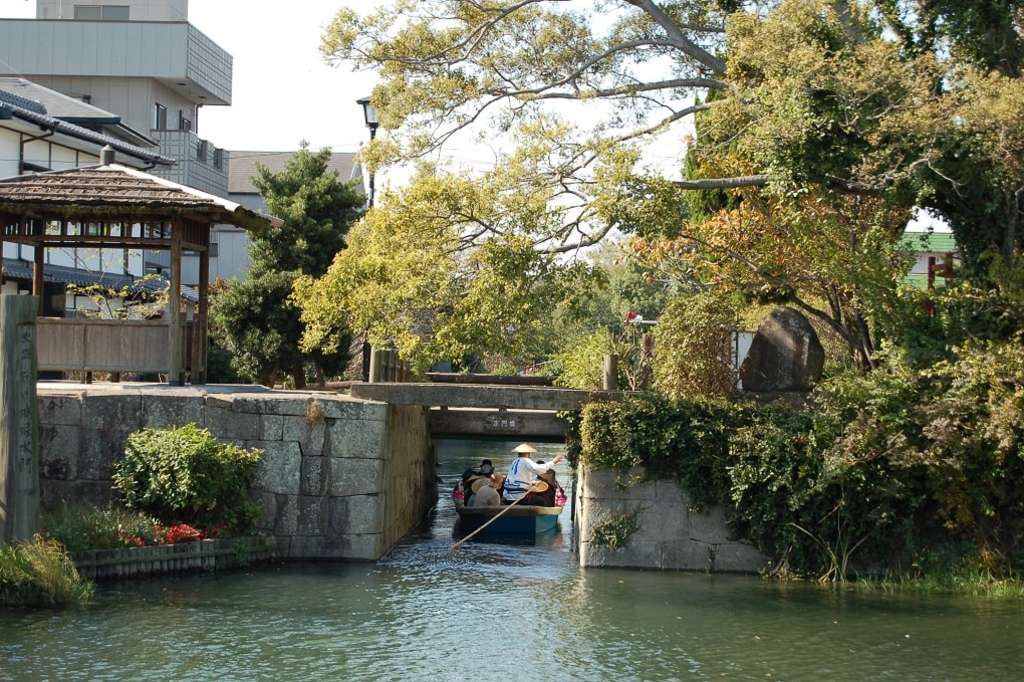
Are there any unique sights or hidden spots in Yanagawa you’d recommend to travellers to get a better sense of the city and local life?
Our city’s history stretches back to when the Tachibana clan ruled this region, so I would recommend a visit to Ohana, the former villa and Japanese garden of the family - it’s a major site in Japanese history.
I would also recommend a visit to the house where our local poet, Hakushu, was born. Although not an old building, it’s noteworthy as the home of one of Japan’s literary greats, and has now been converted into a museum. It’s also lovely to wander the backstreets and along the numerous waterways past rice fields and locals going about their business. Perhaps end the stroll at Yanagawa’s ashiyu, a public hot spring foot bath, drawn from the town’s onsen (hot springs) to relax and soothe tired feet.
We hear that the local specialty in Yanagawa is ‘unagi seiro-mushi’ (steamed eel on rice) and is particularly good. Is that true?
Yes, Yanagawa’s unagi (eel) is amazing and we think it’s the best! Many restaurants here have been making this dish for centuries and still use a secret tare (sauce) passed down over generations. Freshwater eels are grilled first and basted in the tare and then placed over tare-mixed steamed rice. The whole dish is then steamed and topped with very thin slices of egg omelette. This steaming method used makes our unagi dish particularly light and fluffy. The unagi is soft and succulent and literally melts in your mouth.
Are there any other special foods in Yanagawa? Where do you like to go to eat with friends or family after the working week?
Unagi seiro-mushi is a delicacy for special occasions, but locals also eat a lot of fresh seafood from nearby Ariake Bay. One popular dish in Yanagawa and the broader region is ‘kutsu-zoko’ - flounder simmered in a shoyu (soy sauce)-based broth. Also, sashimi from fish caught fresh in the bay is a favourite and goes particularly well with sake. We have a local sake brewery called Yanagawa Shuzo, which produces ‘Kuni-no-kotobuki’, which the locals love.
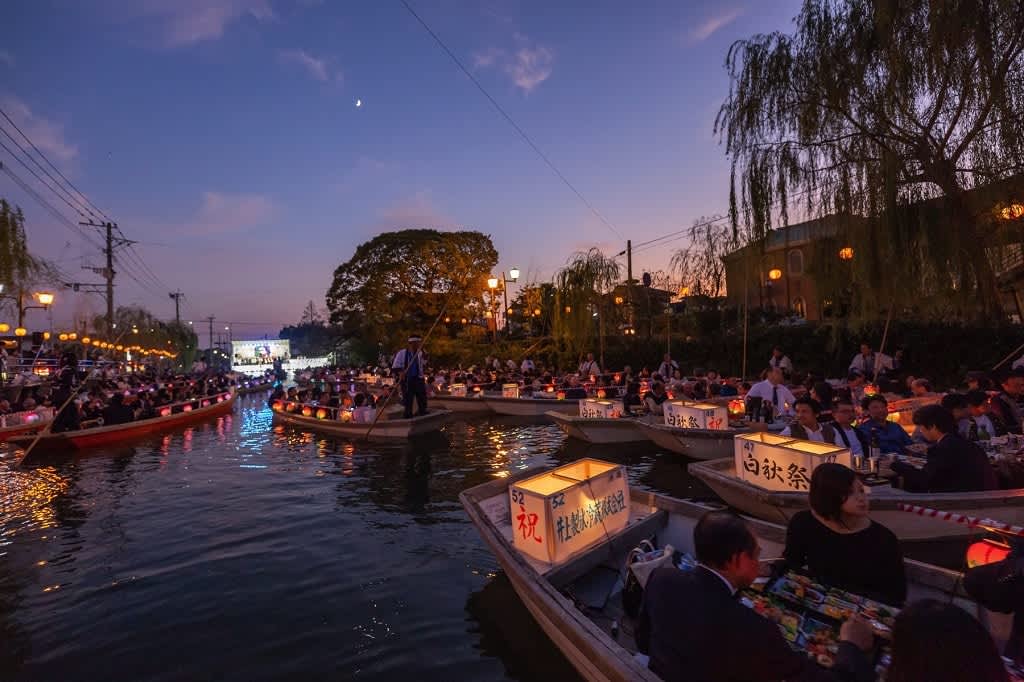
We understand that Yanagawa holds many matsuri across the year, ranging from spring wisteria and summer firework matsuri to matsuri celebrating the poet Hakushu, traditional dolls and even Yanagawa’s eels! Is there a local matsuri you’d particularly recommend to overseas visitors?
I think the best matsuri in Yanagawa is the ‘Hakushu-Sai’, which celebrates the life of Hakushu, the famous poet mentioned earlier. It’s held over three days in early November with various events set up across the city and along the main canal. The best way to enjoy the festival is from the donkobune - the boats stop at different sites where you can hear the poems of Hakushu being recited, listen to community choir groups sing Yanagawa songs, and watch on as small portable shrines are carried through the city’s streets.
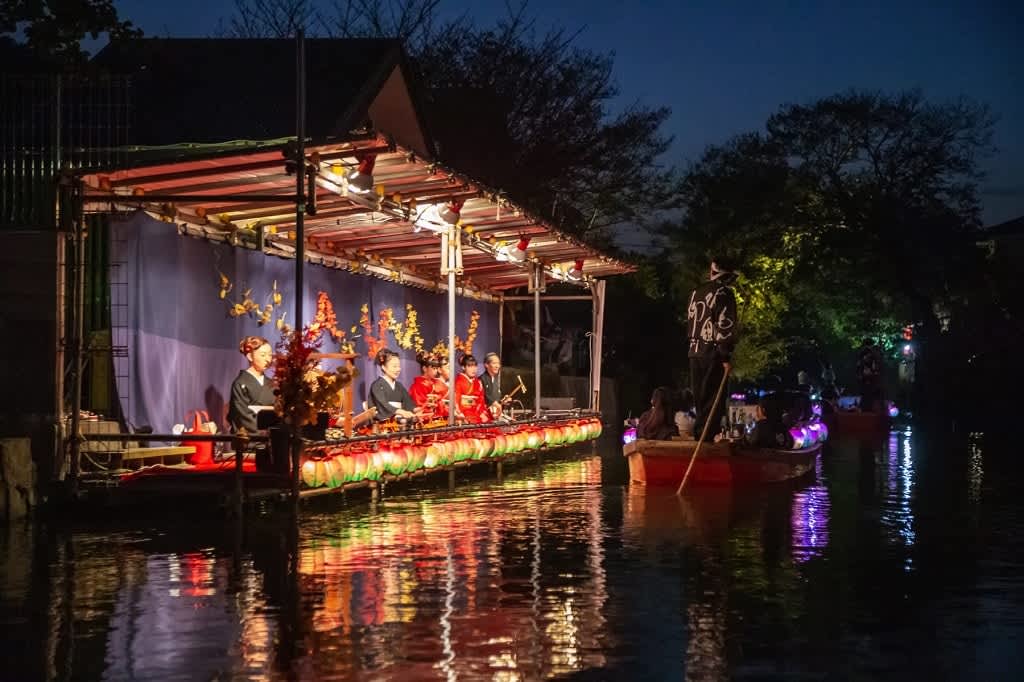
And what about the unagi festival? That sounds interesting too.
This is a religious matsuri held in July. It’s part of our tradition to acknowledge and express thanks to the souls that have contributed to our livelihood, and for Yanagawa, that’s the eel. It’s said that in just one year, there are around 1.2 million eels used in our restaurants. Restaurant proprietors, locals and visitors will gather in front of a monument dedicated to the eel where a priest will perform a formal memorial service.
What is your favourite time of year to be on the waterways?
Each season has its own appeal. Personally, I like the sakura season in spring when the canals’ banks are lined with beautiful pink blooms; autumn gives us the changing of the foliage colour and winter has its own beauty. Though cold, we install traditional kotatsu heaters in the donkobune so the waterways can be enjoyed year-round
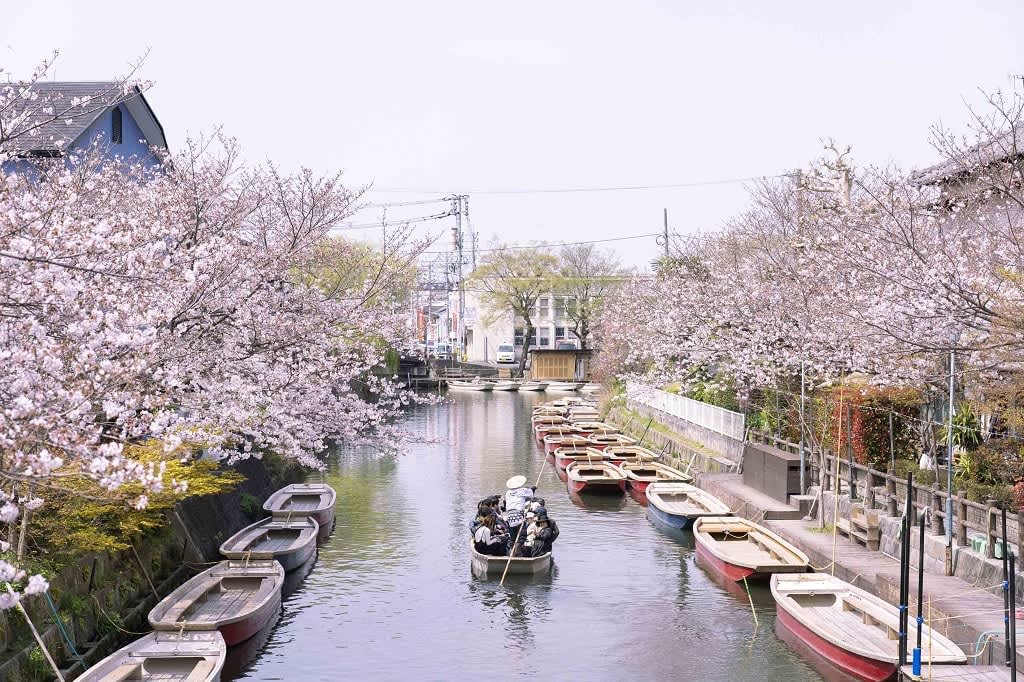
How to get here
Located in the southern part of Fukuoka Prefecture, Yanagawa is best visited by car, however it can also be accessed via public transport. From Fukuoka City, it’s about 45 minutes on the train from Nishitetsu Fukuoka Station to Nishitetsu-Yanagawa Station and by car, it’s 30 minutes – just take the Kyushu Expressway to the Miyama Yanagawa Interchange.



















































